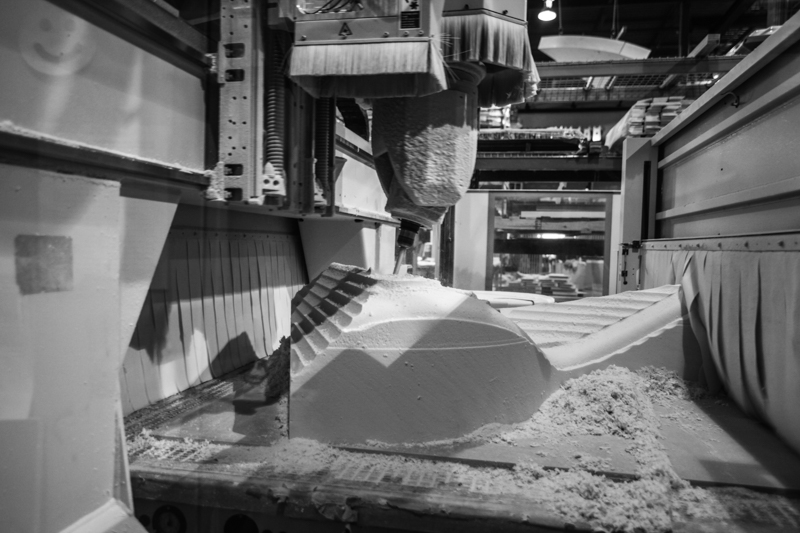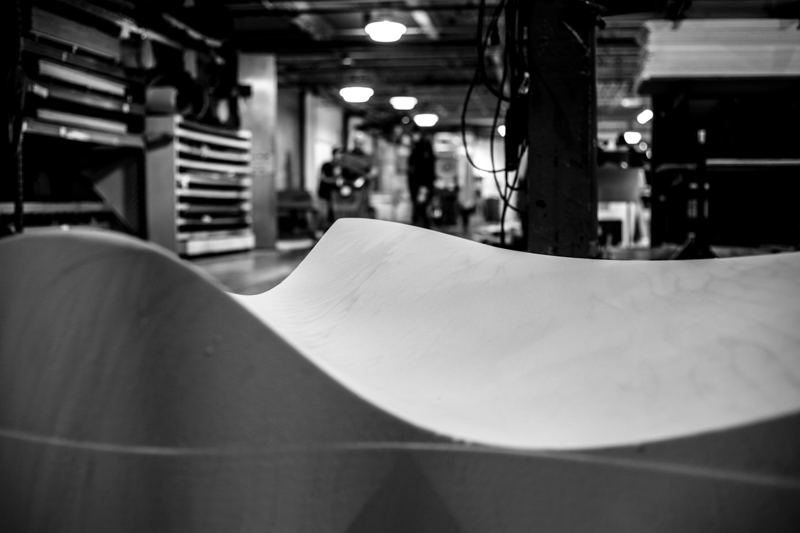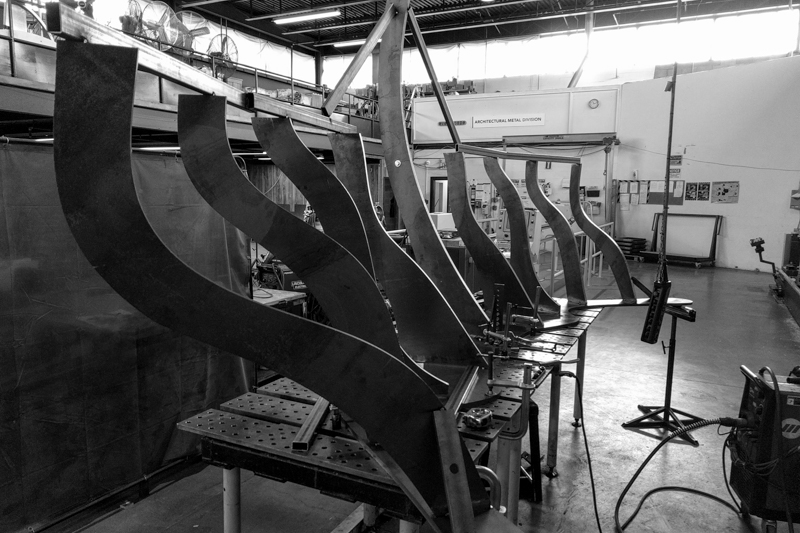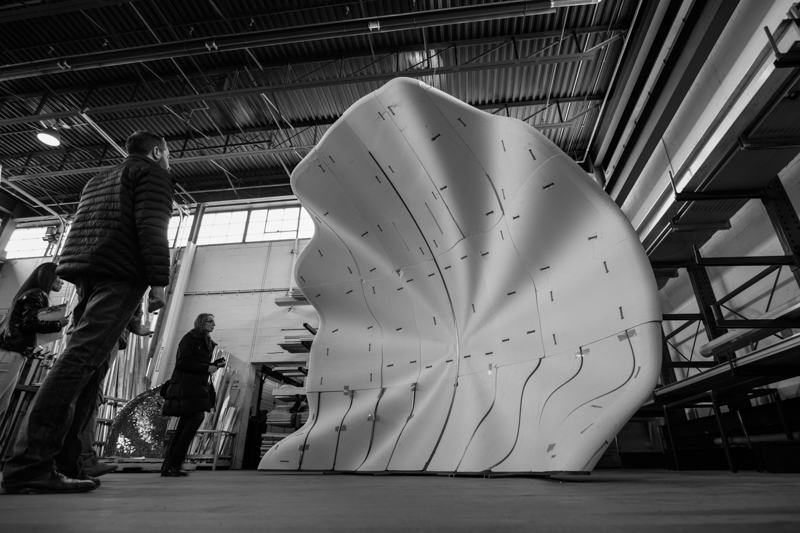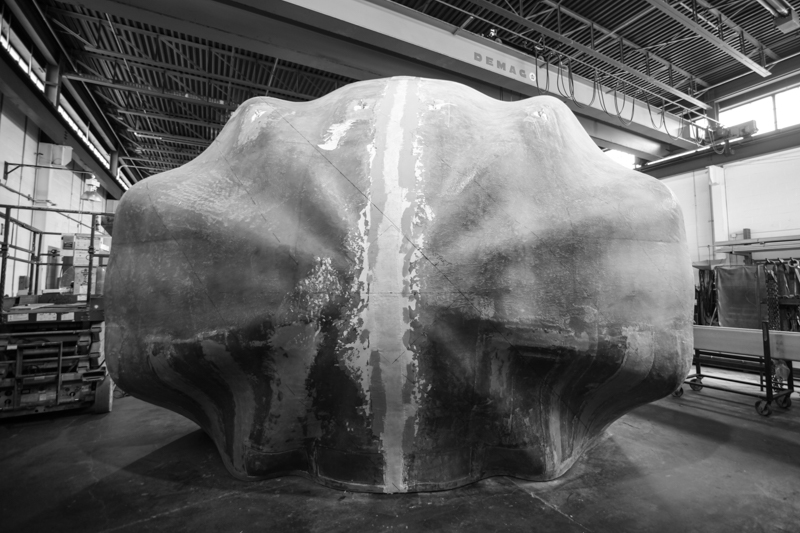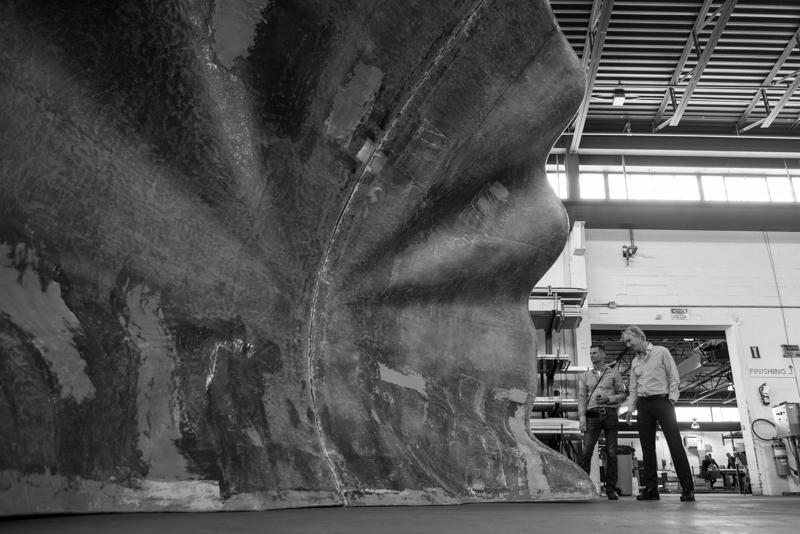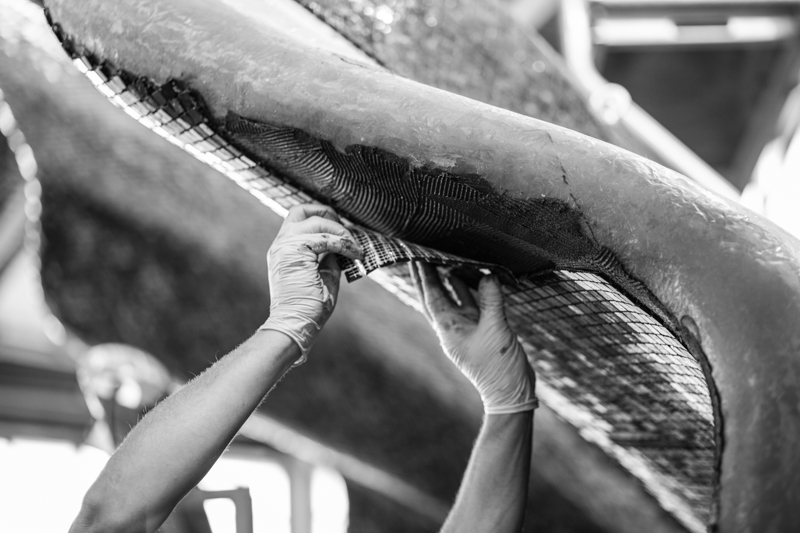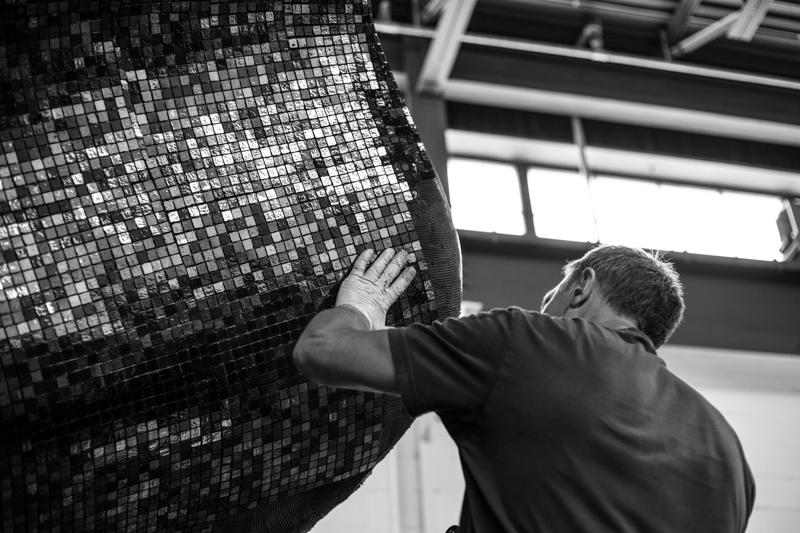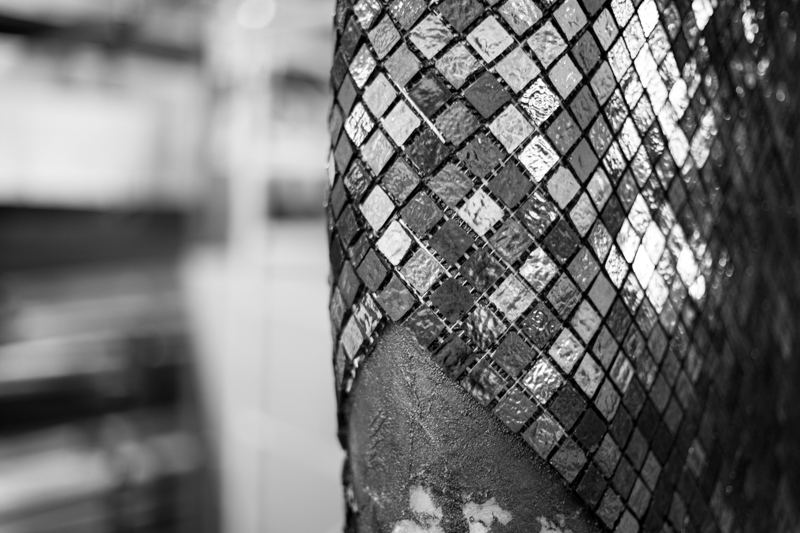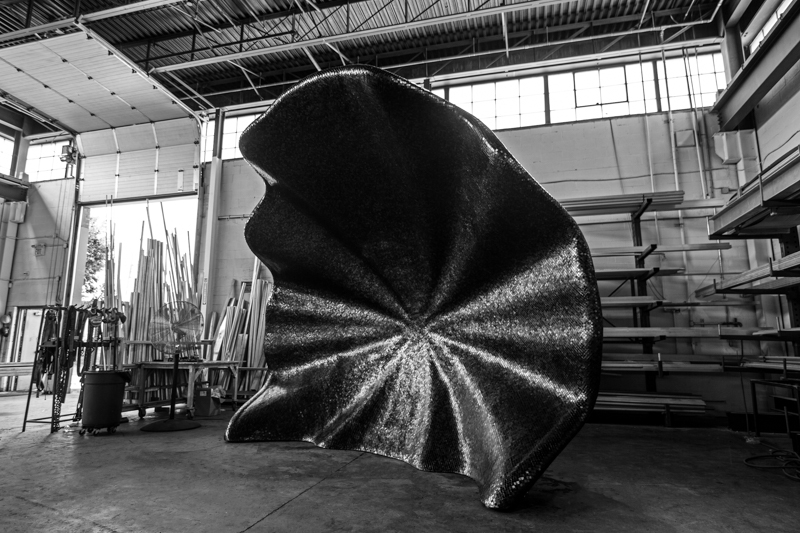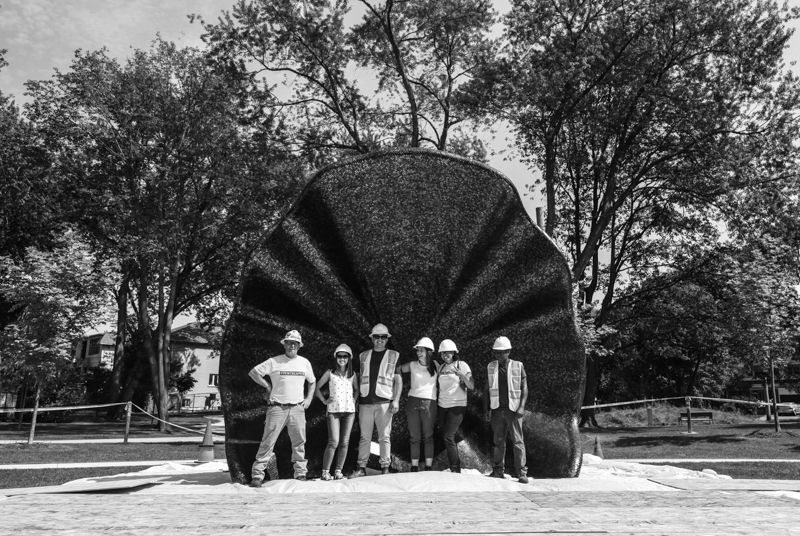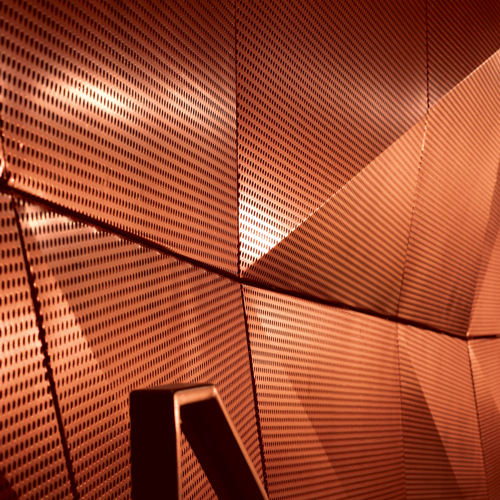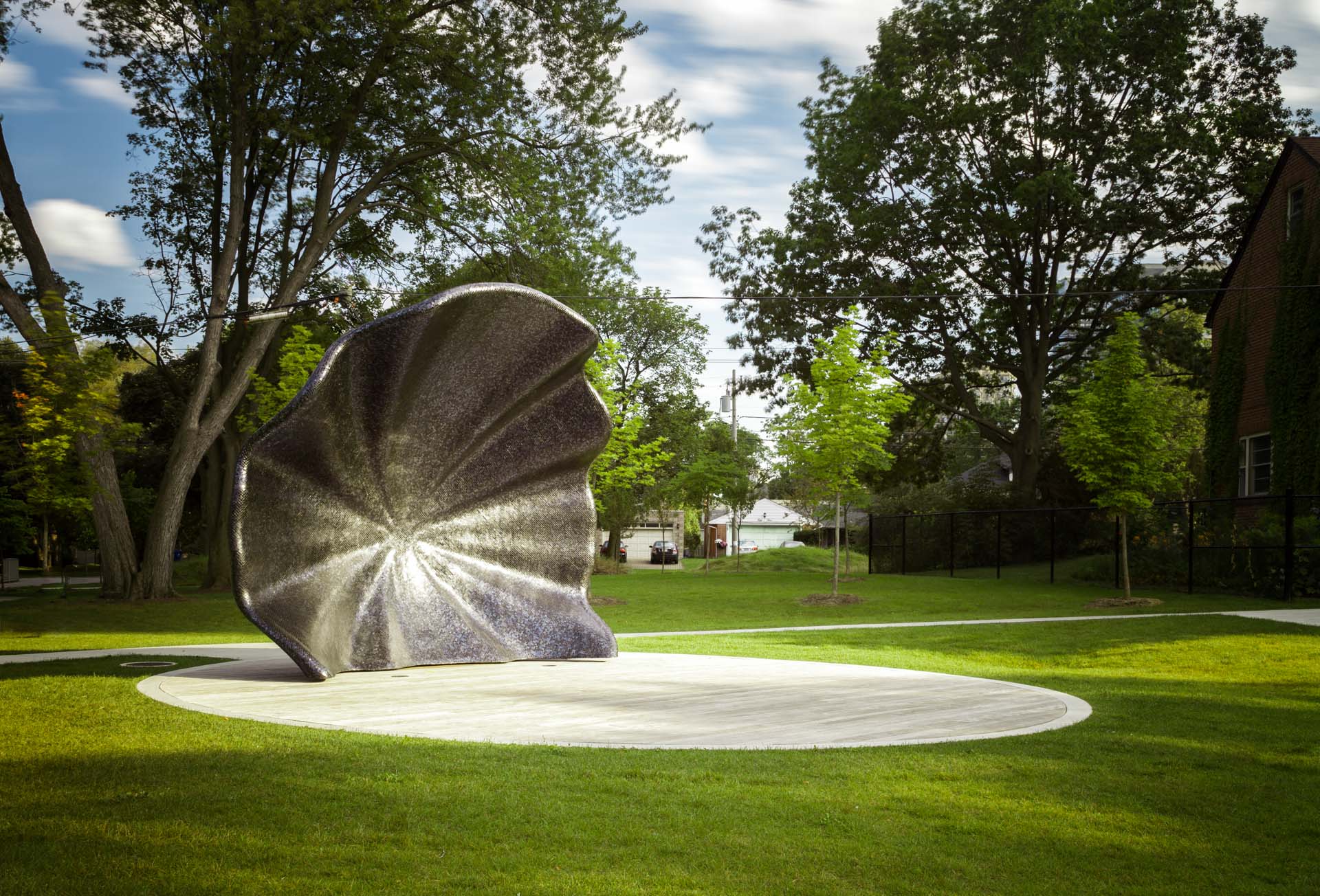

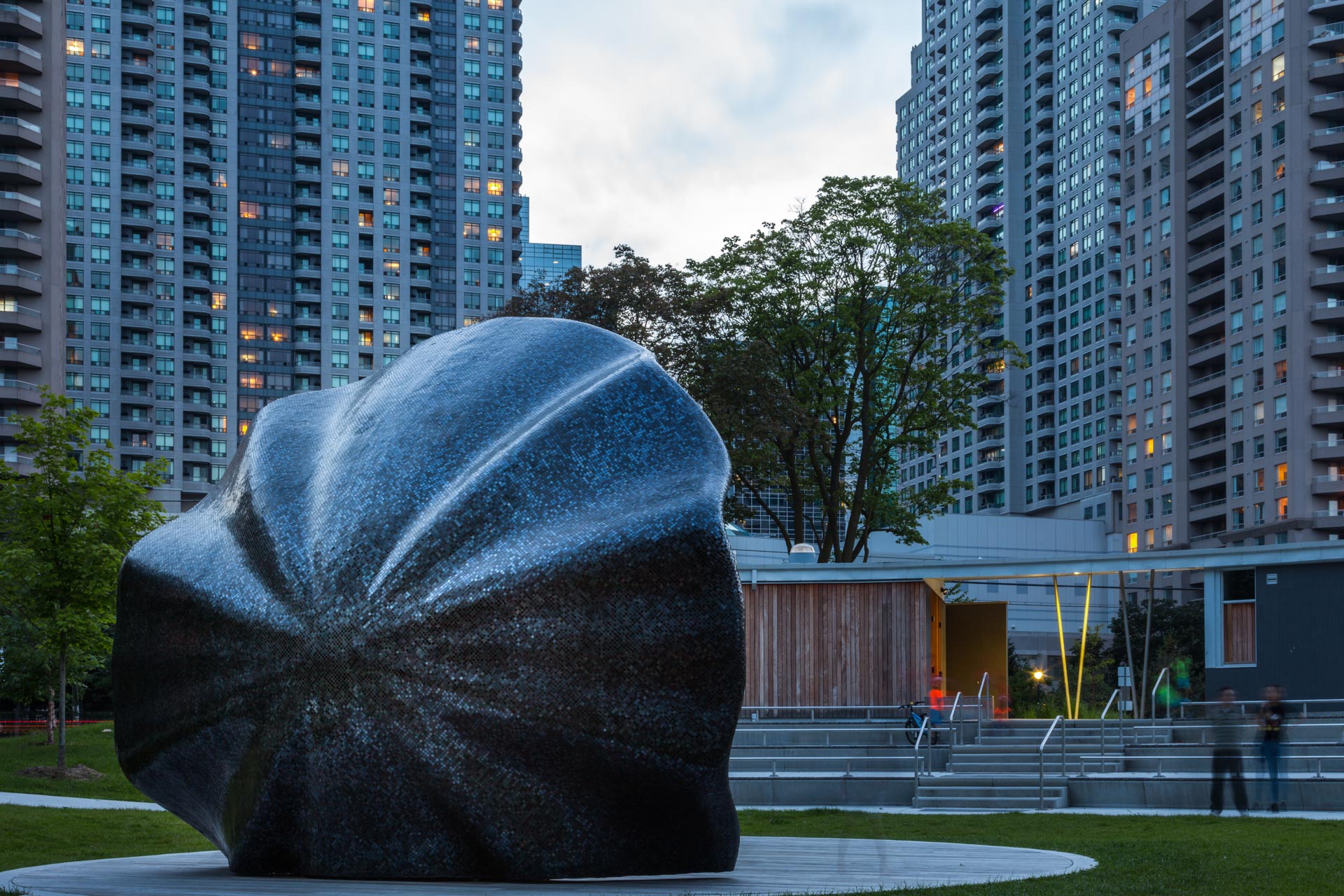
PROJECT “LIMELIGHT BANDSHELL”, LEE LIFESON ART PARK, NORTH YORK, ON
DESIGN PAUL RAFF STUDIO
LANDSCAPE ARCHITECT THE PLANNING PARTNERSHIP
AMPHITHEATER DESIGN FORREC
PHOTOGRAPHY J. LANDAU/PAUL RAFF STUDIO
BUILT BY EVENTSCAPE, AUGUST 2017
Eventscape was proud to build Limelight Bandshell, Paul Raff Studio’s public art piece, in a new park in North York. Dedicated in 2016, the Lee Lifeson Art Park was named in honor of a couple of neighbourhood superstars—Geddy Lee and Alex Lifeson—who formed the celebrated rock band Rush. Based on the theme of sound, the artwork transformed an under-utilized green space into an urban destination.
Paul Raff designed an acoustically reflective “bandshell” as a backdrop at the centre of the natural amphitheatre finished with a stage, three levels of seating and a pavilion. After assessing various materials, the final design was a three-dimensional shell that measured 16-ft wide, 13 ft high and 7 feet deep. It was built with a steel sub-frame, foam interlayer, fiberglass coating and 1/2- by 1/2-inch black glass mosaic tile finish.
Unique Characteristics & Project Challenges:
The structural fabrication challenge of this project was figuring out how to construct a complex geometrical shape using flat, two-dimensional materials. We opted for two-pound polyurethane milling foam that could be molded and then covered it with fiberglass. This enabled us to form the bandshell’s fluted shape. The engineered steel sub-frame provided support for the foam, fiberglass and tile. The main 1/2-inch steel centre plate and 5/8-inch steel ribs were CNC-cut to conform to the complicated curvature of the shell.
The shell was built in two sections for ease of handling. Working from the designer’s 3D form, the foam was digitally modeled and divided into 24 sections—each one unique. The foam was CNC flip-milled to capture both convex and concave surfaces and also create a mirror image on each section. All the 10- by 20-inch foam sections were then assembled on the sub-frame, and bonded to the fiberglass coating. In critical areas—at seams and the four engineered lifting points—we used roving. Once the two sections were complete, they were bolted together with nuts and custom washers along the central spine. Steel angles were also used along the ribs to hold the foam in place along the frame. Many steel angles were hand hammered to suit the contour of the ribs.
Eventscape researched the best mortar and grout for the glass mosaic tiles. We tested various exterior, automotive and marine-grade products. Extra special care was taken on the tiling, with 15 percent of the tile work applied as individual 1/2-inch square tiles. Many of them required cutting to accommodate the undulations along the shell’s surface. Because it involved applying flat tiles to a rounded perimeter, the edge detail was the most complex. A final layer of anti-graffiti coating was added for protection in this public space. Paul Raff and his team reviewed and approved each layer as the shell was built.
Installation was a finely-tuned choreographic event. Delivered to the site on a flatbed truck, a 300-ton crane used the engineered lift points to fly the 6,800-pound structure over trees and hydro lines and land perfectly on a stage made of Ipe wood. It was secured to the threaded rods and engineered footings provided by the city.
The installation completed, smiles broke out all around as the crew sang Happy Birthday to Eventscape’s lead designer. The bandshell performed magnificently and music echoed throughout the theatre. More “official” concerts will be seen—and heard—at Lee/Lifeson Art Park.
